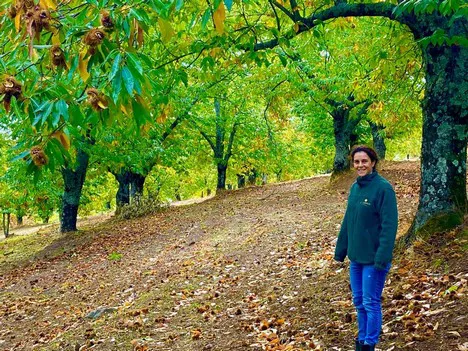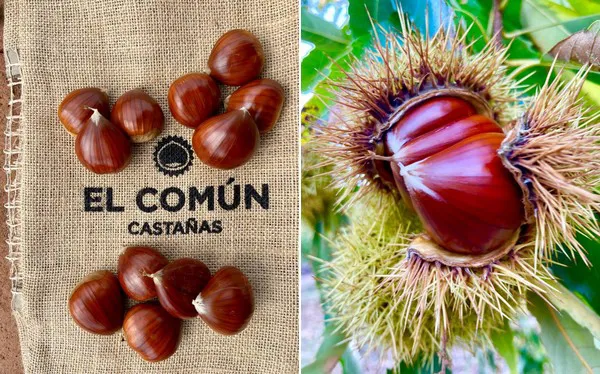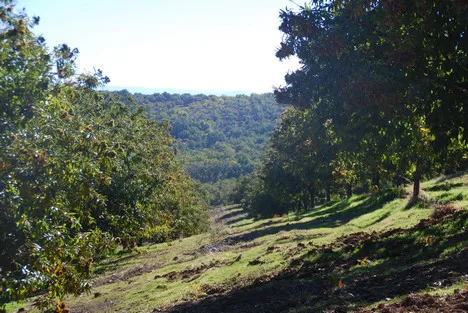With autumn comes a product associated par excellence with this time of the year: chestnuts; a nut whose consumption in the Iberian Peninsula goes back centuries, and which was already cultivated in Spain in Roman times, when the crop was probably introduced.

"The season in Extremadura starts in September with the earliest varieties, but it is now, in November, when the campaign is in full swing in the Sierra de las Villuercas with the main variety grown in the region: the Verata, which is the one customers associate with us," says Rocío Vázquez, of Castañas El Común. "The variety is highly appreciated for its sweet flavor, its ease of peeling and its quality."
"The demand so far has been very good, especially until November 1 (All Saints' Day), when chestnut consumption peaks. Traditionally the demand falls in November and then picks up again strongly in December in the run up to Christmas, after which the campaign comes to an end. However, sales continue at a good pace," she says.

"Besides, in Galicia, which is the main producing region in Spain, there has been a lower production, with small fruits that have fallen more slowly, so there has not been as much supply for fresh consumption, for which the largest calibers are needed. This has been a consequence of the impact of the chestnut wasp, a pest that once affected Italy and is now affecting Spain and Portugal, and which takes a toll on the final quality of the product. The pest is certainly out there, but fortunately, it has not yet settled in this area," says Rocío.
Dryocosmus kuriphilus, better known as the chestnut wasp, is a cynipid native to China and is considered the most important chestnut tree pest in the world. In recent decades it has spread throughout the northern hemisphere. The first European country where it was detected was Italy in 2002, and ten years later, in 2012, its presence was first reported in Spain.
"Our production amounts to around 400-500 thousand kilos, but when all the trees in our chestnut groves become productive we expect to reach one million kilos," says Rocío Vázquez. There are so many factors to take into account that it is difficult to make forecasts for each season. However, as long as you have a quality product, there will be no problem to market it, because chestnuts are in great demand."

The challenge in Spain: finding chestnuts all year round
Castañas El Común exports the production from its chestnut groves in Extremadura to Europe, Canada and some Arab countries, where its chestnuts, which compete with those of Turkish and Chinese origin, are highly appreciated for their flavor and quality. An important part of its production is also sold on the domestic market.
"In Spain, the seasonal product is consumed fresh. It can be purchased in stores and supermarkets, and can also be consumed in the streets, where they are sold by roasted chestnut stalls. However, there is still a lot of work to be done to make them more popular among young people and encourage their consumption."
"Besides, we have an additional problem in the Spanish market. Consumers are unable to find chestnuts in supermarkets all year round. In countries such as Portugal, France or Italy, you can find frozen chestnuts at any time of the year in any supermarket, but this product is not marketed in our country," says Rocío. "The same applies to dried chestnut, which is not easily found in Spanish stores. For this reason, I am getting in touch with other industrial chestnut companies to try launching a promotional campaign and encourage the consumption of chestnuts, both fresh and processed, all year round."
For more information:
Rocío Vázquez
Castañas El Común
10140 Guadalupe, Cáceres. Spain
Tel. 0034 680 579 579
rocio@elcomun.net
www.elcomun.net
